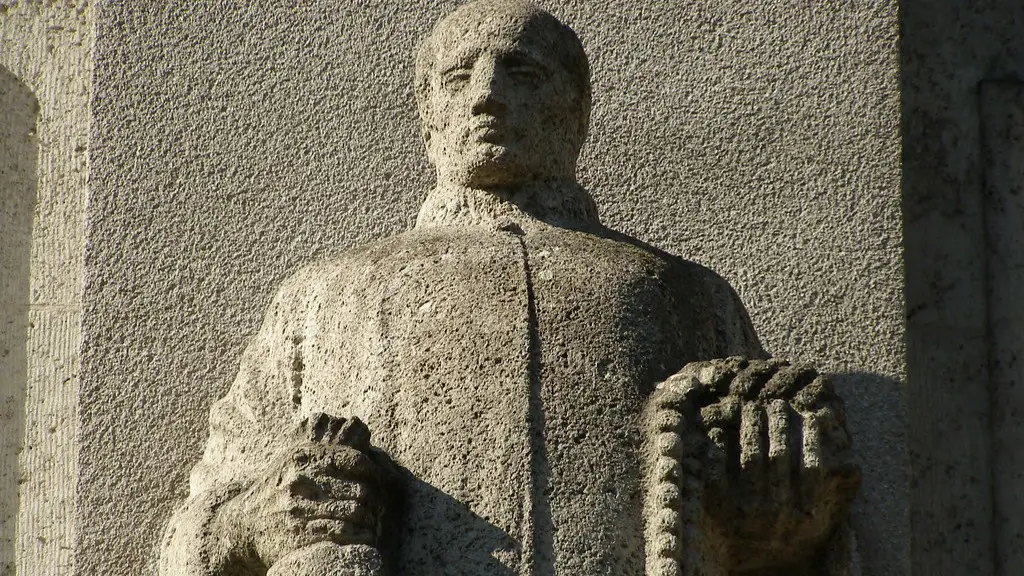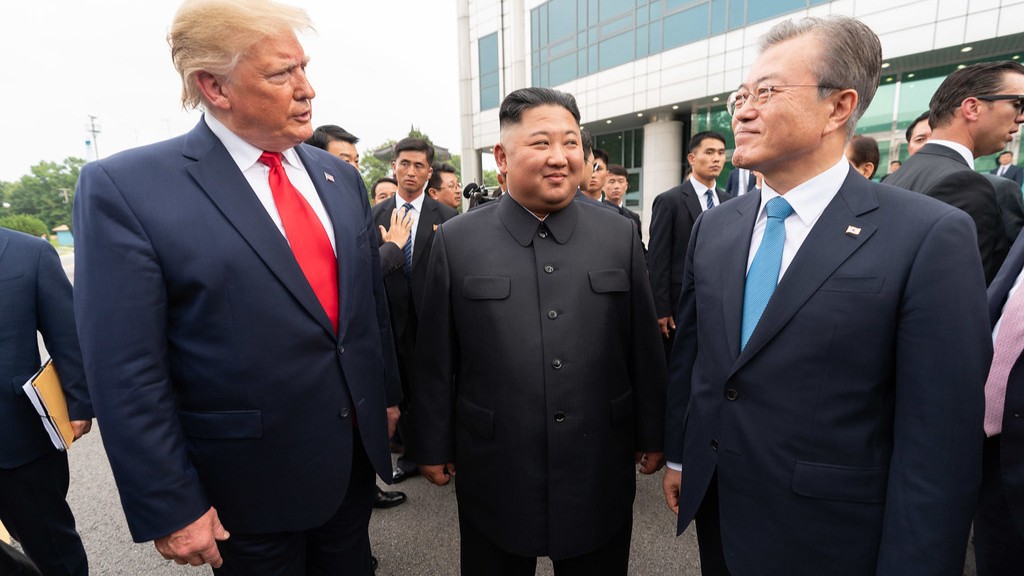In the years following the death of Vladimir Lenin in 1924, Joseph Stalin emerged as the leader of the Soviet Union. Stalin had been a member of the Bolshevik party since 1903 and had served as the party’s General Secretary since 1922. As General Secretary, Stalin had control over the party’s membership and was able to appoint loyal supporters to positions of power. Stalin was also able to use the party’s propaganda machine to portray himself as a competent and effective leader.
After Lenin’s death, Stalin was able to outmaneuver his rivals for power, including Leon Trotsky, Grigory Zinoviev, and Lev Kamenev. Stalin consolidated his power by appointing loyalists to key positions within the government and the party. He also used the secret police to repress his opponents and to enforce his will.
Stalin’s rule was characterized by totalitarianism, a single-party dictatorship, and a command economy. Under Stalin, the Soviet Union underwent a rapid process of industrialization and collectivization. Millions of people were displaced and many were killed in the process. Stalin’s rule also led to the Great Purge, in which millions of people were arrested, exiled, or killed.
Stalin was one of the Bolshevik leaders who seized control of the Russian government in the 1917 October Revolution. He became the de facto leader of the Soviet Union in the 1920s, and remained in that position until his death in 1953. Stalin consolidated power by collectivizing agriculture, forced industrialization, and purging his opponents. He also promoted Soviet nationalism and anti-capitalism.
How did Stalin gain consolidate and maintain power?
Stalin was able to gain and maintain power in the USSR by using his position as general secretary to gain control of the Communist party. He established programs that changed agriculture and industry and strengthened his control over the party by eliminating all opposition (labor camps, death lists, etc.
The Soviet Union was a country that was highly controlled by the government. Fear was used as a tool to keep the people in line. The NKVD was a secret police force that was used to terrorize the population. Labour camps were used to keep the people working. Media censorship was used to control the information that the people had access to. The cult of personality was used to worship the leaders of the Soviet Union. Education was used to indoctrinate the people. Public facilities were used to control the people. Rising living standards were used to keep the people happy.
Who gained power after Stalin
After Stalin died in March 1953, Nikita Khrushchev became the First Secretary of the Central Committee of the Communist Party of the Soviet Union (CPSU) and Georgy Malenkov became the Premier of the Soviet Union.
After being elected to the Bolshevik Central Committee in April 1917, Stalin helped Lenin to evade capture by authorities and ordered the besieged Bolsheviks to surrender to avoid a bloodbath. The Bolsheviks then seized Petrograd and Stalin was appointed People’s Commissar for Nationalities’ Affairs. In this role, he was responsible for overseeing the implementation of Bolshevik policies among the various ethnic groups of the Soviet Union.
Which method was most influential in maintaining Stalin’s power?
Stalin’s reign of terror was the most effective way for him to maintain power. By using the secret police to crush any dissent and monitor everyone, he was able to keep a tight grip on the country. Anyone could be arrested and imprisoned or even executed for the smallest of offenses, which helped to keep people in line.
Gaining power is the process of obtaining and expanding it. Consolidating power is the process of taking control from others who also have power. Maintaining power is the process of keeping one’s power.
What three methods did Stalin use to take control of his country and people?
Propaganda, fear and terror, praise and glorification were all key tools used by Adolf Hitler during his reign as the dictator of Nazi Germany. Hitler and his Nazi party murdered millions of people in an attempt to show their power and silence opposing parties. They also manipulated the education system and indoctrinated the youth with their propaganda in order to ensure the future success of their regime.
Stalin’s forced collectivization of agriculture led to widespread famine and death in the Soviet Union. Peasants were forced into collective farms against their will and given impossible quotas to meet. Police and party brigades would carry off food and seed grain, leaving peasants with nothing to eat or plant. This led to widespread starvation and death, particularly in the Ukrainian countryside.
How did the Soviets take power
The October Revolution of 1917 saw the Bolsheviks overthrow the Russian Provisional Government that formed earlier that year. This marked the end of the Russian Empire and the beginning of the USSR. The USSR was a country that was based on the principles of socialism and communism. It was a country that was very different from the capitalist countries of the West. The USSR was a country that was very secretive and mysterious to the outside world.
As one of the key figures in the Russian Revolution, Stalin played a pivotal role in the establishment of the Soviet Union. After Lenin’s death in 1924, Stalin assumed leadership of the country and oversaw its transformation into a Communist state. Stalin’s rule was characterized by a series of brutal dictatorship and a mass repression of the people, which led to the death of millions. Despite the atrocities committed during his reign, Stalin remains an iconic figure in Soviet history.
What was Stalin’s last words?
It’s interesting to see the different accounts of Stalin’s death in 1953. Some say that he angrily muttered about wolves, but Joshua Rubenstein’s new book The Last Days of Stalin mentions no audible last words, just gurgling and a malevolent glance. It’s hard to know what really happened, but it’s clear that Stalin was a powerful figure even in death.
Stalin’s radical economic policies in the early 1930s, known as the Great Turn, completely transformed the Soviet Union’s industrial and agricultural landscape. The Soviet Union turned away from the mixed-economic New Economic Policy (NEP) and adopted a planned economy. These policies had a profound and lasting impact on the Soviet Union and its people.
What is Joseph Stalin best known for
Joseph Stalin was one of the most brutal dictators in history. He ruled the Soviet Union with an iron fist, and millions of his own citizens died during his reign. He was a ruthless leader who didn’t hesitate to kill anyone who opposed him. Stalin was a master of propaganda and used it to control the people of the Soviet Union. He was a very effective leader, but his methods were barbaric and caused the death of millions of innocent people.
Stalin’s rule oversaw a period of intense industrialization in the USSR, as well as the forced collectivization of agriculture. This was accompanied by a massive program of police terror, designed to consolidate his position and crush any opposition. The result was a vast expansion of Soviet control over a belt of eastern European states.
What was Joseph Stalin’s main goal for the Soviet Union?
In November 1927, Joseph Stalin launched his “revolution from above” by setting two extraordinary goals for Soviet domestic policy: rapid industrialization and collectivization of agriculture. These goals were designed to transform the Soviet Union from a rural, agrarian society into a modern, industrial superpower. To achieve these goals, Stalin enacted a series of radical policies that had a profound impact on the Soviet people.
The first policy was rapid industrialization. Under this policy, the Soviet government invested heavily in heavy industry, such as steel and coal production. This investment led to a boom in industrial output, but it also caused widespread hardship for the Soviet people. To finance industrialization, the government appropriated land and resources from the peasants, resulting in widespread famine and hardship.
The second policy was collectivization of agriculture. Under this policy, the Soviet government forcibly collectivized farms and collectivized the peasants who worked them. This policy led to a massive increase in food production, but it also caused great hardship for the peasants. The government appropriated land and resources from the peasants, resulting in widespread famine and hardship. In addition, the government imposed strict quotas on food production, resulting in widespread famine and hardship.
The policies of rapid industrialization and
Joseph Stalin rose to power as the General Secretary of the Communist Party in the Soviet Union. After the death of Vladimir Lenin, Stalin became the Soviet dictator. Stalin was a brutal leader who was responsible for the death of millions of people. However, he also led the Soviet Union to victory in World War II.
Conclusion
Joseph Stalin was the General Secretary of the Communist Party of the Soviet Union’s Central Committee from 1922 until his death in 1953. In the years following the October Revolution of 1917, Stalin became the top leader of the USSR. He gained power by consolidating power within the party and eliminating his political opponents. He maintained his power by using propaganda, secret police, and terror to control the Soviet people.
After Lenin’s death, Joseph Stalin outmaneuvered his rivals to become the Soviet Union’s sole leader. He consolidated power by appointing loyalists to government positions and using secret police to control the population. Stalin also promoted Communism through a series of five-year plans that resulted in economic growth and the transformation of the Soviet Union into a world superpower.





